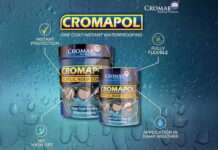Nails have been used by humans for thousands of years, and screws as fasteners for hundreds. The result is that a huge variety of screws, nails, and fixings are available today. They’re ubiquitous in roofing and essential even for DIY projects. Choosing the right fixing for the job might seem difficult, so at ERoofing we created this guide to help you pick the perfect one for your problem.
Nail Heads – Why have different types of nail heads
Nail heads have to balance three competing priorities. One is making the nail removable if need be, another is making it indiscrete when in place, and a third is making it hold whatever it is fixing in place as securely as possible. For instance, even a thumbtack falls into these – priority two is irrelevant, while priority one is the most important, so it sticks out a lot to be more ergonomic
If a nail never needs to be retrieved and needs to hold something in place with a smooth finish, lost head nails are very useful. These have a very small head that can be driven into the wood alongside the nail, leading to a smooth finish. These are the sorts of nails that are used on floorboards or skirting boards where a non-smooth finish would be dangerous.
For roofing, clout nails are very useful. These are sometimes called flat head nails. They have a wide, pancake-shaped head. This prioritises traction above anything else. For example, if you’re nailing down shed felt to a cabin, that felt will be exposed to updraft consistently. This makes a high-traction nail like a clout nail necessary. They can hold the shed felt in place even in the face of prevailing winds.
Of course, there are also specialty nail heads, like nails with ring heads so that rope or something similar can be tied to the ring and secured in place.
Screw Heads – What’s the difference between a Phillips screw and a Pozi screw?
All screw heads need some sort of indentation to allow them to be screwed in by screwdrivers. Originally this was just a single “slot” that a flathead screwdriver could operate. These are still sometimes seen today on cheap screws. However, the slot had an issue. It was very easy for a flathead screwdriver to “cam out” of it. This meant slipping out when the torque was too great for the screw head to hold the screwdriver in. Improvements had to be made.
What is a Phillips Head screw?
However, a cross-shaped design was eventually developed by John P. Thompson, who sold it to Henry F. Phillips. This “phillips head” allowed for much greater torque than a slot without the screwdriver “coming out” as easily. This was fantastic, especially for electric screwdrivers.
Subsequent designs have been developed since the Phillips head. In general, most screw head designs tend towards two different poles. The simpler a design is, the easier it is for the screwdriver to come out of the screw. This increases the chance of “coming out”.
This makes it easier to remove the screwdriver and therefore makes working more efficient. On the other hand, it also limits the level of torque they can be applied with. The more complex designs are able to bear much greater levels of torque. Since they cling to the drill bit better, they can also be applied at odd angles where simpler heads would not be as practical.
Pozidriv head and SPAX T-STAR head
For example, the Phillips head is relatively simple. Its successor, the positive drive – or Pozidriv, sometimes shortened to Pozi – is more complex. The Pozi has four additional, smaller grooves in the head coming out from the centre of the Phillips cross. This means that the screw can get more purchase on the head, giving it significantly more torque than a Phillips head.
Something like the SPAX T-STAR is more complex still. Instead of a cross shape, it resembles a five-pointed gear. This adds yet more torque. Some even have another indentation, allowing for easier drilling overhead. These designs sacrifice work speed for better individual performance of the fixings.
Depending on what you’re screwing and what materials you’re working with, each type of screw head fits a different situation.
Shanks and threads
The rest of a nail is made up of a shank – this is the bit that pierces into the wood. Screws additionally have a thread that goes up part or all of their shank. This thread is what allows screws to grip onto a material after they have been driven in there.
What sorts of special threads and shanks are there?
Some nail shanks blur the line between nail and screw. For instance, the ring shank nail has a series of rings protruding from the shank slightly. This means when it is hammered in, it has a huge amount of traction and holds very fast. The screw shank nail is even more unique. It is essentially a screw that is applied like a nail – it has a screw’s thread around part of the shank, but is designed to be hammered into place. The thread makes it spin around as it is driven into place. This gives it the same grip as a screw would, though it does take some effort to be driven into place.
Countersunk screws are screws with a shank that tapers to the edge of their head. This allows the entire head to be driven into the wood and not just the shank. This is the screw equivalent of a lost head screw, in that it gives a smooth finish once fully in place.
Some screws designed for fixing two pieces of wood together have a shank that is unthreaded at the top. This allows the head to be pulled tightly, creating a more secure fit. It also acts as a heat sink as the thread experiences heat, reducing chances of a thread overheating. Overheated threads can have durability compromised and can also crack the wood via heat expansion.
Sufficiently strong threads, such as some of the high end SPAX screws, combined with a high-torque head can potentially be drilled into wood without the need for pre-drilling, massively improving efficiency. However, this will only work with certain woods.
Galvanised Steel vs Stainless Steel – Which one should I pick?
When it comes to waterproofed fixings, there are two primary materials, galvanised steel and stainless steel. The difference is that galvanised steel is a bi-metal, while stainless steel is an alloy.
Galvanised steel is comprised of two components. The first is steel, and the second is a zinc coating that goes around the steel. This combination may be produced through either electrolysis or through hot-dip galvanisation, though the latter has become more popular in recent years.
The steel core will provide the strength in the fixing. The zinc layer will provide the waterproofing. This means that if the zinc layer is damaged, the steel core will be exposed to moisture.
However, the process of “galvanic corrosion” can be very useful here. This is a process where metal gets leached from one metal to another one. Because of the properties of steel and zinc, the zinc from further along the zinc layer will move along to the exposed steel, leading to temporary self-repair at the cost of the layer thinning overall. Despite this, eventually the layer of zinc will be completely destroyed. This gives a galvanised fitting exposed outside a lifespan of around 10-15 years.
Stainless steel is an alloy of carbon steel that also contains a significant component of chromium. Rather than having a waterproof coating then, the steel itself has become waterproof the whole way through. This means that surface damage will not compromise it in the same way as galvanised steel. In addition, unlike most galvanised steel, stainless steel is even waterproof against salt water. This makes it very useful for houses in coastal areas. Only specialised zinc coatings like SPAX’s WIROX coating are particularly resistant to saltwater.
However, this benefit comes at a significant cost- literally. Whereas galvanised steel is scarcely more expensive than normal steel, stainless steel can cost up to five times as much. Some of the highest quality stainless steel screws and nails can be prohibitively expensive. It all depends on the environment your house has.
Other waterproofing solutions for fixings- what are lead domes and plastic caps?
Sometimes to further protect fixings, coverings are used to shield them from the elements. For instance, where screws are used on the lead parts of roofs, lead domes can be placed over them to protect them. They are hammered over a screw and washer to serve as another line of defence, as well as being more aesthetically pleasing.
There are also plastic coverings available for fixings. There are nails with plastic flat heads that serve to protect them from water once they have been driven into place. There are also more advanced solutions. For instance, when installing roofing sheets, it may be possible to find screws with flexible screwcaps. These screwcaps will allow for a watertight fit over the roofing sheets.





